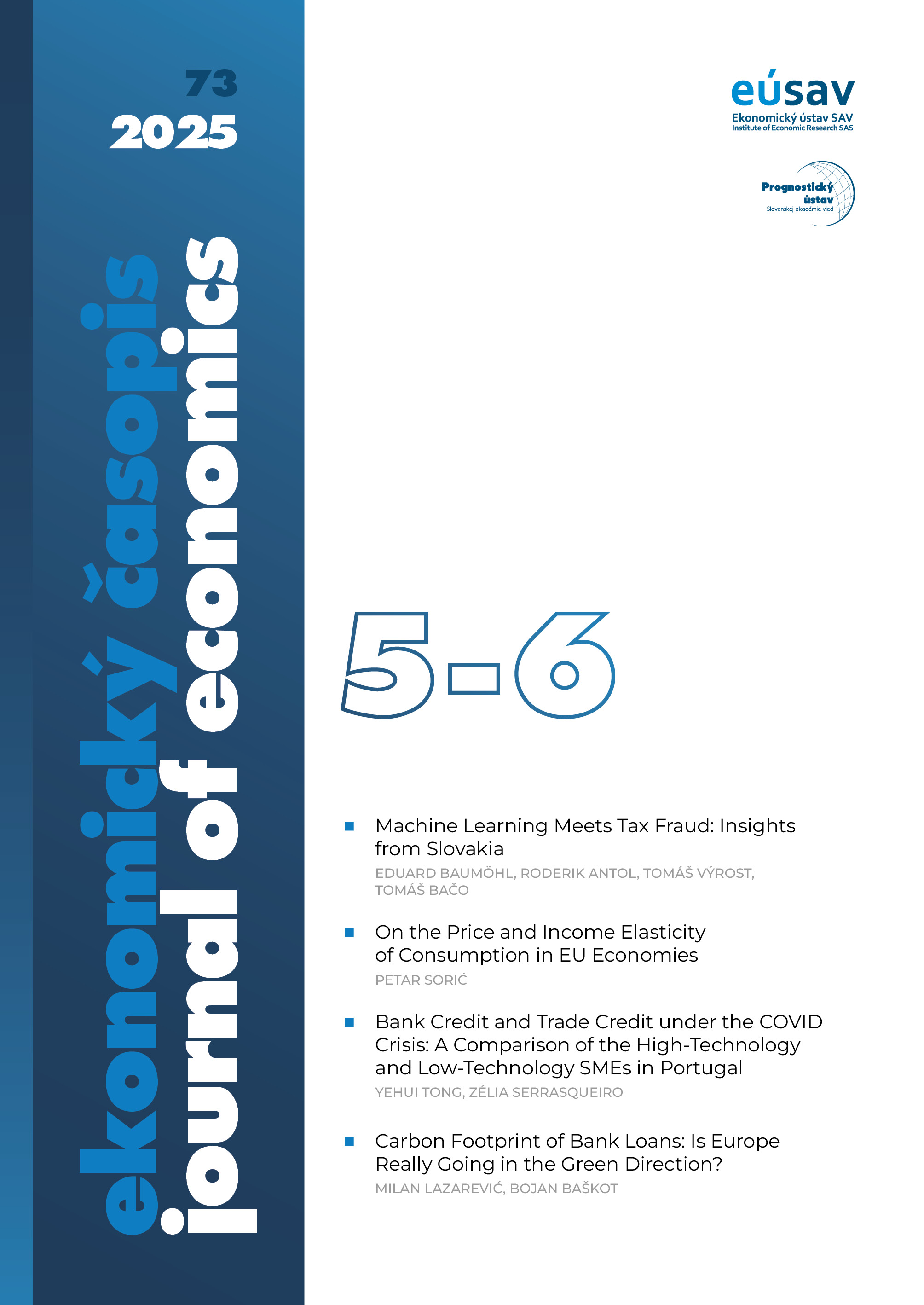Machine Learning Meets Tax Fraud: Insights from Slovakia
DOI:
https://doi.org/10.31577/ekoncas.2025.05-06.01Keywords:
tax frauds, detection models, machine learning, earnings managementAbstract
One of the most intriguing topics in the field of corporate finance is the detection of tax fraud. We consider a unique dataset of outcomes from Slovak tax authority audits, obtaining valuable insights into verified instances of tax manipulation and avoiding the misclassification problem that is common in this stream of literature. We apply artificial neural networks, random forests, XGBoost, and support vector machines to verify the extent to which we can classify tax manipulators on the basis of publicly available financial statement indicators. Our results show that the XGBoost model demonstrated the highest effectiveness, achieving an F1 score of 0.75 in the full sample, slightly lower scores within the industry groups, and excellent results in sector A – Agriculture, with an F1 score of 0.85. Our results indicate that the use of nowadays commonly known machine learning methods along with standard financial variables can provide a useful tool for tax fraud detection and, as such, can contribute to higher efficiency of tax audits.
Downloads
Published
Issue
Section
License
Copyright (c) 2025 Eduard Baumohl, Roderik Antol, Tomáš Výrost, Tomáš Bačo

This work is licensed under a Creative Commons Attribution-NonCommercial-NoDerivatives 4.0 International License.


